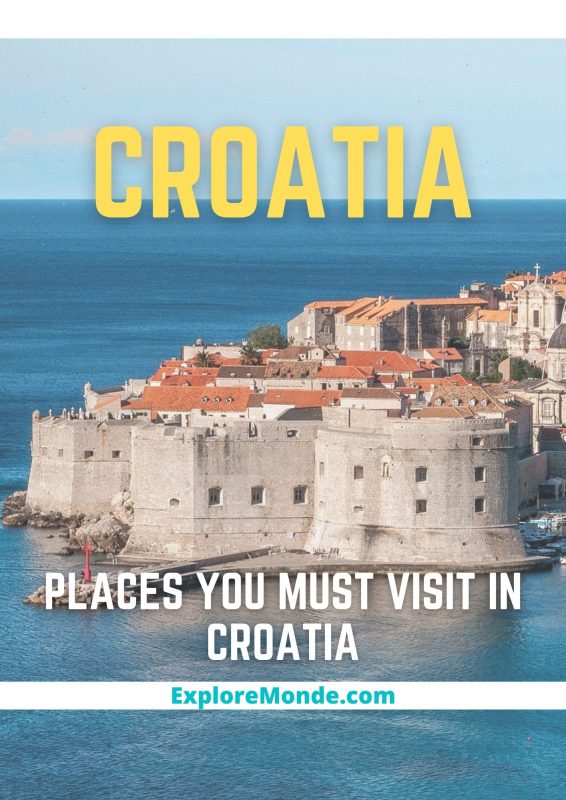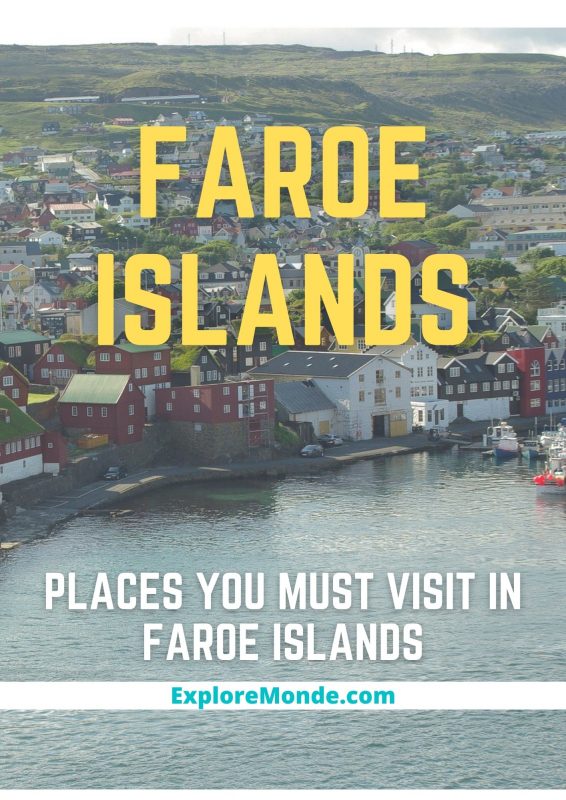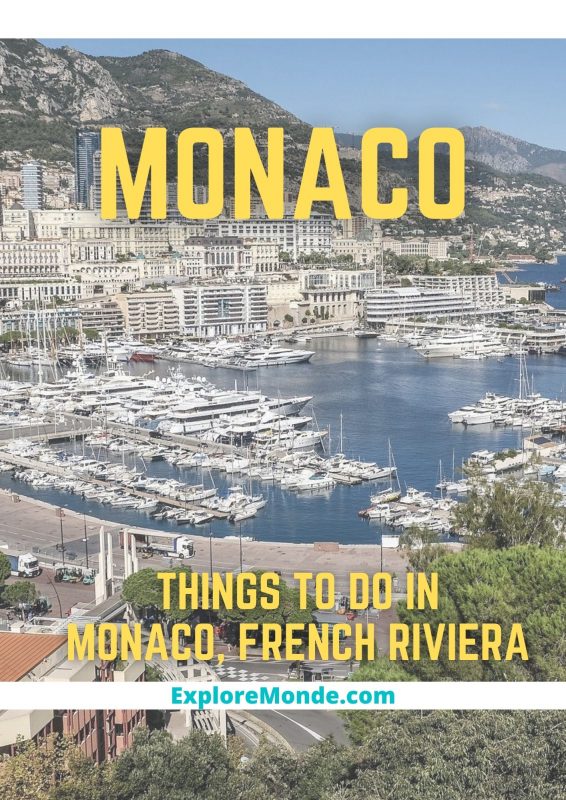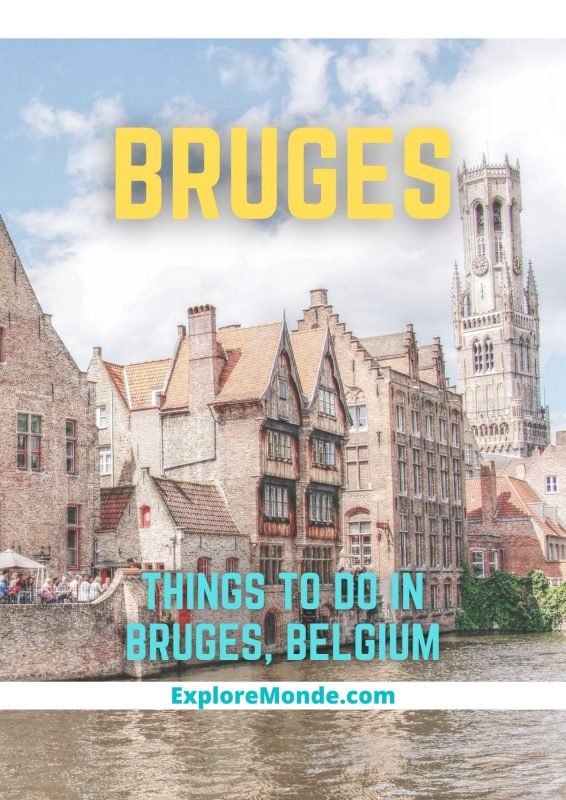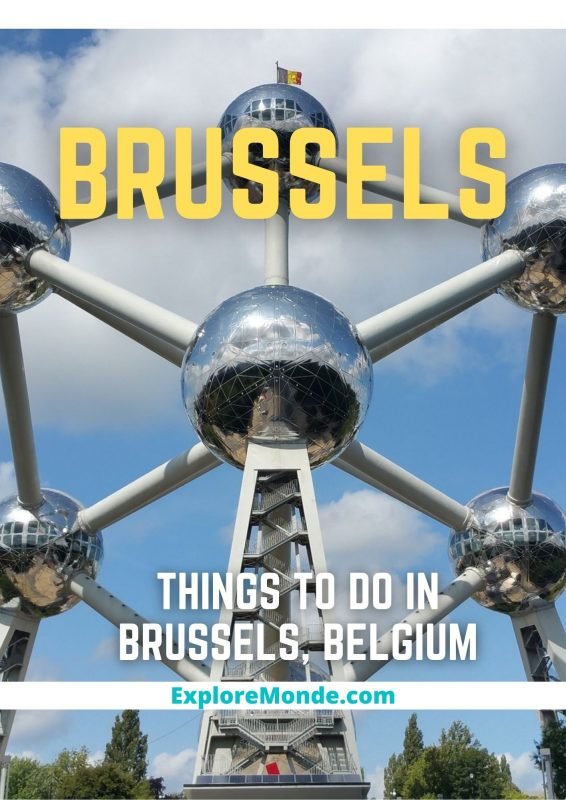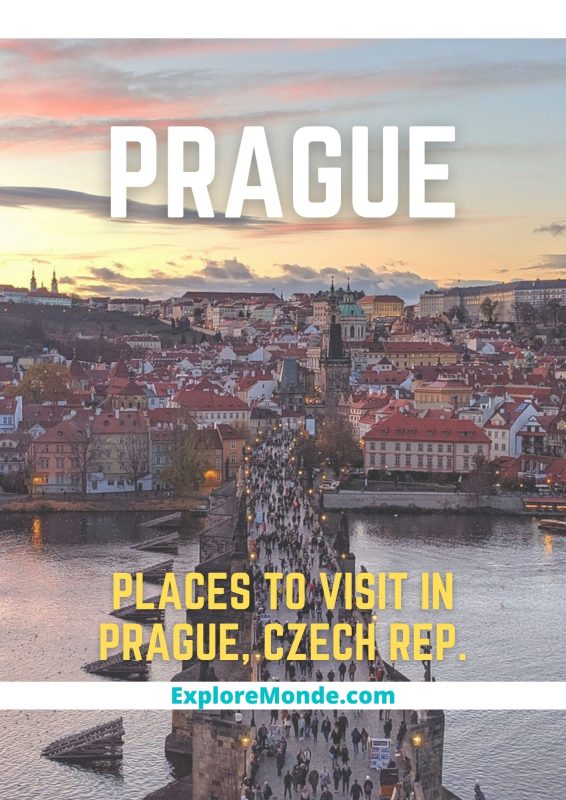This article has been reviewed by Laura and Sumeet, travel enthusiasts who have travelled to 40+ countries. (Follow @Ciao.Namaste on Youtube). Should you have any inquiries, please do not hesitate to contact at contact@exploremonde.com
The Grand Duchy of Luxembourg is a small country in Western Europe that offers its visitors many different things to see and do. The capital of this European country, also called Luxembourg City, is where most tourists head straight for but there are plenty of other wonderful places lying further away from the capital, some of which are well worth visiting.
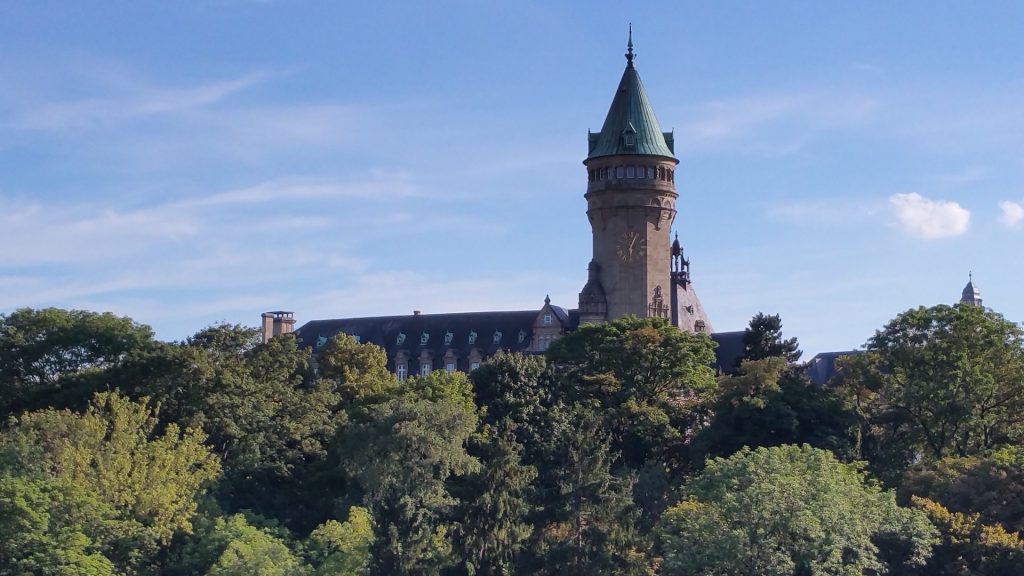
Best Things to do in Luxembourg
1. Old Quarter of Luxembourg City
Stepping into the Old Quarter of Luxembourg City is like flipping through the pages of a living history book. As you wander along the cobbled streets, each stone beneath your feet whispers tales of epochs gone by.
The ancient fortifications stand tall, narrating stories of medieval grandeur and battles fought. The charm of the old town is inescapable, with its quaint cafes nestled in centuries-old buildings, offering a cozy nook to soak in the ambiance.
The Gothic Revival architecture of the Notre-Dame Cathedral stretches towards the sky, as if reaching out to the annals of history, while the melodious toll of its bells resonates through the heart of the Old Quarter.
As the daylight fades, casting long shadows on the historic façade, the city’s old-world charm embraces the modern buzz, creating a picturesque blend of the past with the present.
There’s an unspoken magic that lingers in the air, enticing every soul that treads the age-old pathways of the Old Quarter of Luxembourg City, making every moment spent a rendezvous with history.
There’s no better place to begin exploring #beautiful #Luxembourg City than in its #historic Old Quarter. Designated a UNESCO World Heritage Site in 1994, the city’s ancient fortifications made it one of the most important of #Europe‘s cities. #Explore – https://t.co/NJeUtcOKHi pic.twitter.com/xT2QehugNC
— Save A Train (@SaveATrain) June 7, 2019
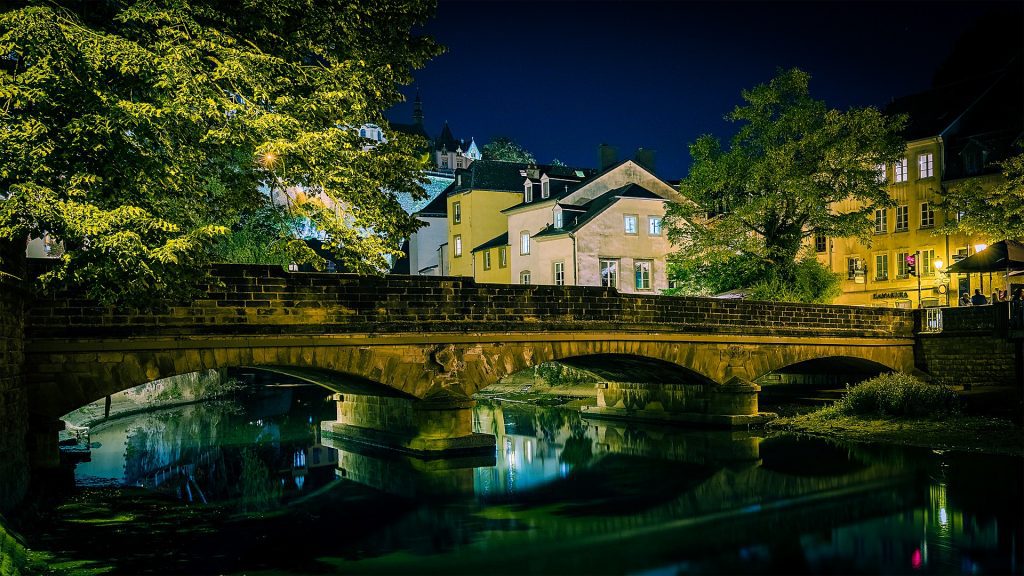
2. Adolphe Bridge Luxembourg
Standing majestically over the tranquil Pétrusse Valley in the heart of Luxembourg City, the Adolphe Bridge is more than just a passage; it’s a symbol of Luxembourg’s architectural prowess and its enduring spirit.
As you approach this grand arch bridge, the aura of historical significance encases you, transporting you to a bygone era where each stone laid was a step towards modernity. The moment you step onto the bridge, you’re greeted with a sweeping panorama of the city’s picturesque skyline, juxtaposed against the lush greenery of the valley below.
The blend of old-world charm and modern urbanity is awe-inspiring. The gentle breeze carries whispers of the past as you stroll along, with each step unveiling a new perspective of the city’s multifaceted beauty.
Adolphe Bridge isn’t just a marvel of engineering; it’s a journey through Luxembourg’s rich history, offering a vantage point unlike any other, where every glance is a picture waiting to be captured.
Bestseller Drones
Your heart races as the captivating views unfold, making your visit to Adolphe Bridge a memory etched in time, a moment where Luxembourg’s essence truly unveils itself.
Luxembourg Adolphe Bridge,named after the Duke of Luxembourg who personally laid the first stone in 1900 pic.twitter.com/niLOuDkf3J
— Baluteanu Anka (@AncaBaluteanu) February 3, 2016
3. National Museum of History and Art
Embarking on a journey through the corridors of the National Museum of History and Art (MNHA) in Luxembourg is akin to stepping into a time machine. As you traverse through the diverse galleries, each artifact and painting unveils a page from Luxembourg’s rich and varied tapestry of history and culture.
The modern, spacious architecture of the MNHA, nestled amidst the historical backdrop of Luxembourg City, creates a dramatic contrast that captivates every visitor. Here, the whispers of the past harmonize with the contemporary, offering a multifaceted exploration of art and history.
From ancient relics, medieval manuscripts, to modern art installations, the museum is a treasure trove waiting to be discovered. Every exhibit tells a story, whether it’s of the grand dukes and duchesses who once roamed the palaces, or the skilled craftsmen whose legacy lives on through the meticulously crafted artifacts.
As you delve deeper into the museum, the essence of Luxembourg’s identity unfolds before your eyes, leaving you with a profound appreciation for the rich cultural heritage embedded in this small yet illustrious European nation.
Bestseller GoPro Selfie Sticks
The National Museum of History and Art is more than just a museum; it’s a gateway into Luxembourg’s soul, promising an enriching and exhilarating adventure to everyone who steps inside.
As priceless as the paintings and artifacts contained within its walls, the building that houses the National #Museum of History and Art is one of the most photographed in #Luxembourg City. – https://t.co/NJeUtcOKHi pic.twitter.com/kaZYFyoahq
— Save A Train (@SaveATrain) July 30, 2020
4. The Bock Casements, Luxembourg City
Embarking on a journey to the Bock Casemates in Luxembourg City is akin to stepping into a riveting tale of history, adventure, and architectural genius.
Nestled atop a rocky cliff, these ancient underground tunnels and galleries, dating back to 1644, whisper tales of sieges, monarchs, and wartime strategies. As you traverse the cool, echoing pathways beneath the city, you’re not merely walking through stone corridors, but traversing the veins of Luxembourg’s historic heart.
Each step takes you further into a bygone era, where every crevice and cannon loophole tells a story of valor and ingenuity.
The panoramic views from the casements are nothing short of breathtaking, offering a vantage point to behold the picturesque cityscape, with its blend of verdant greenery and urban charm.
Bestseller Copper Water Bottles
The Bock Casemates, a labyrinth of history nestled in the heart of Europe, offers an exploration experience that transcends the ordinary, igniting a spark of wonder and reverence for the grand tapestry of human endeavor and the enduring allure of Luxembourg’s storied past.
One of the most dramatic photos you’ll take in #Luxembourg City will be of the Bock Casements (Casemates du Bock), the ruins of the old fortifications that once protected the city. #Explore – https://t.co/NJeUtcOKHi pic.twitter.com/QTWBxk0zSH
— Save A Train (@SaveATrain) July 31, 2020
5. Grand Ducal Palace, Luxembourg City
Stepping into the heart of Luxembourg City, the Grand Ducal Palace unveils before you in an aura of timeless elegance and royal grandeur.
As you approach this historic emblem of the nation’s monarchical heritage, the meticulously crafted facade, adorned with intricate stonework and majestic spires, beckons you into a narrative steeped in regal traditions.
During the summer, the palace’s grand doors swing open to the public, inviting you into a realm where the past and present engage in a graceful dance. As you traverse through its opulent halls and majestic chambers, each step echoes with tales of ducal legacies, unveiling a captivating blend of Flemish Renaissance architecture and contemporary Luxembourger artistry.
The whispers of history resonate through the ornate corridors, while the polished grandeur of the throne room reveals a slice of the living royal narrative.
Bestseller Cupholder Bottles
Amidst the hustle of the modern city that encircles it, the Grand Ducal Palace stands as a serene yet potent emblem of Luxembourg’s enduring royal lineage, offering a riveting journey through the pages of time in every delicate arch and stone-carved emblem.
Each visit to the palace is not merely a tour, but an exciting voyage through Luxembourg’s rich royal narrative, a step back in time encapsulated in a majestic stillness amidst a modern-day capital.
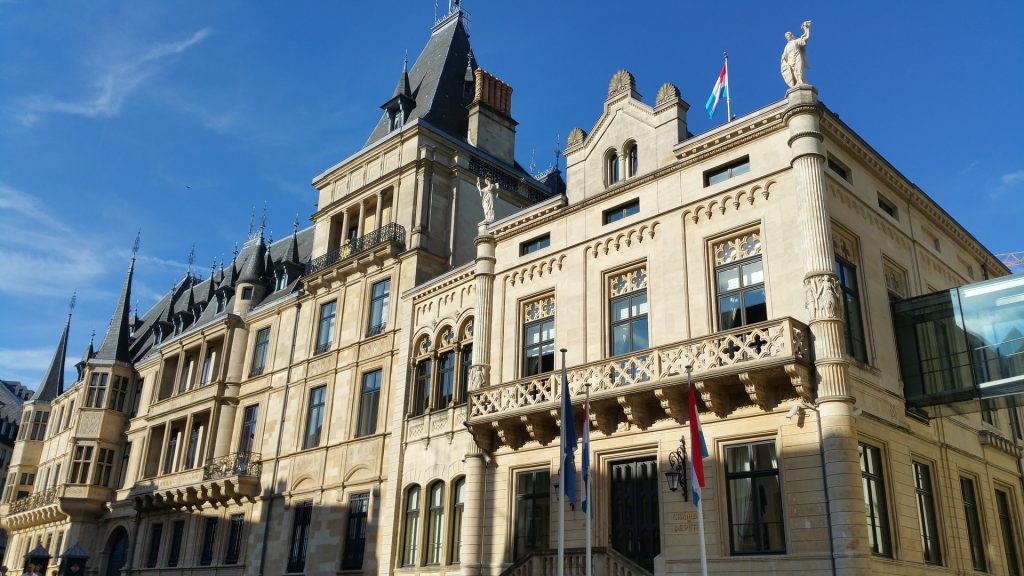
6. The Walls of the Corniche
The Walls of the Corniche in Luxembourg are often hailed as the “most beautiful balcony in Europe,” and for good reason.
As you traverse along this majestic elevated pathway, you are treated to breathtaking vistas of the old town of Luxembourg City and the serene Alzette river valley below.
The stone ramparts on one side tell tales of bygone eras, while the expansive view on the other side showcases the lush greenery and meandering rivers that characterize the tranquil landscape.
Every step on the Corniche is a step through history, with the panoramic views providing a stunning backdrop to the ancient fortifications that once guarded the city.
The juxtaposition of the old and new, the natural and the man-made, is awe-inspiring. As the sun sets, casting a golden glow on the stone walls and bathing the valley in a soft warm light, you realize the Walls of the Corniche is not just a pathway, but a journey through time, nature, and the heart of Luxembourg’s charm.
This enchanting walk encapsulates the essence of Luxembourg, offering a serene yet exhilarating exploration of the city’s historical and natural beauty.
7. Place Guillaume II
The enchanting Place Guillaume II, a square pulsing with history and life in the heart of Luxembourg City! As you step into this bustling square, the grandeur of the surrounding architecture sweeps over you. At its center stands the majestic equestrian statue of Grand Duke William II, a silent guardian watching over the city’s vibrant daily life. The square exudes an old-world charm, enveloped in the embrace of stately buildings that whisper tales of bygone eras.
On a sunny day, the square bursts into color with the lively market, where locals and visitors mingle over fresh produce, flowers, and artisanal crafts. Every glance reveals a scene from a picture postcard; children chasing pigeons, laughter ringing from the quaint cafes lining the perimeter, and the soft strum of a street musician’s guitar blending with the murmurs of the crowd.
And then, there’s the splendid Town Hall, its facade a narrative of Luxembourg’s historical essence, standing proudly at one end of the square. As the sun sets, casting a golden glow on the cobblestone, Place Guillaume II transforms into a serene haven, with the soft rustle of leaves and the gentle whispers of history echoing through the cool evening breeze.
A visit to Place Guillaume II is not just a stroll through a square, but a journey through time, a rendezvous with the soul of Luxembourg. Each step resonates with the harmonious blend of the past and the present, making a visit to this charming square an unforgettable chapter in your Luxembourg adventure.
16 most popular tourist attractions in Luxembourg
— Helena Ereditsh Dr (@ereditsh) August 24, 2019
5 Place Guillaume II, Luxembourg City pic.twitter.com/ZdxyCWh5WC
8. Grand Duke Jean Museum of Modern Art (MUDAM)
Stepping into the Grand Duke Jean Museum of Modern Art (MUDAM) in Luxembourg is like entering a different realm.
The striking modern architecture, designed by the renowned I. M. Pei, is a masterpiece in itself. It beckons visitors into a world where the contemporary meets the classical. Each exhibit is a journey through the innovative and imaginative landscape of modern art.
The vast, airy spaces are filled with light, showcasing a diverse collection that ranges from painting and sculpture to digital media. The museum challenges the conventional, urging visitors to think outside the box. It’s not just a museum; it’s a dialogue between the past, present, and future of art.
Bestseller Drones
Each visit to MUDAM is an adventure, an opportunity to explore the cutting edge of the creative frontier. The peaceful ambiance, coupled with the provocative exhibits, makes MUDAM a sanctuary for art enthusiasts and curious minds alike.
In a city steeped in history, MUDAM stands as a beacon of modernity and a testament to Luxembourg’s vibrant cultural scene.
The lovely Grand Duke Jean Museum of Modern Art, abbreviated to Mudam, is a museum of modern art in Luxembourg City by architect I.M. Pei.. pic.twitter.com/DPEDHu14zT
— Arch Journal (@ArchJournal) July 1, 2017
9. Echternach
Echternach, the quaint and charming town nestled in Luxembourg’s verdant Eastern region, is a place where each cobblestone and medieval facade tells a tale of its ancient roots.
As you stroll through the town, the rhythmic charm of the centuries-old Dancing Procession resonates in the air, a tradition that echoes Echternach’s rich cultural past.
The serene waters of the Sûre River gently meander through the town, mirroring the calm yet vibrant spirit of the region.
With each step, the splendid Basilica of Saint Willibrord stands as a testament to the town’s religious heritage, its ancient stones whispering prayers of ages past.
The nearby Abbey, with its sweeping gardens, is a peaceful retreat that invites quiet reflection amidst nature’s embrace. And as the sun casts a golden hue over the town, the surrounding Müllerthal Trail beckons.
Here, the “Little Switzerland” of Luxembourg unfolds, with its rocky landscapes and lush forests offering a scenic adventure that etches unforgettable memories in the heart of every explorer.
Echternach isn’t just a visit; it’s an experience, a journey through time, where each moment holds the promise of discovery, and every turn reveals a blend of history and natural beauty waiting to be explored.
🏛 It was sunny time in Luxembourg city, but Echternach was like in a middle of a big but gentle cloud. I was thinking about these Romans who were certainly homesick about the clear blue sky beyond the Alps.☁️☀️☁️ pic.twitter.com/Sl5GTMwwSx
— 🔥TimeTravelRome (@TimeTravelRome) November 26, 2020
10. Benedictine Abbey Luxembourg
Embarking on a visit to the Benedictine Abbey in Luxembourg is akin to stepping into a realm where tranquility meets timeless elegance.
Nestled amidst rolling hills and lush greenery, the abbey stands as a silent guardian of history. As you approach the ancient stone structure, the world seems to slow down, allowing the essence of centuries past to wash over you.
The ornate arches and stained glass windows are a spectacle, casting a kaleidoscope of colors as the sun plays hide and seek with the clouds. Each stone, each carving, tells a tale of devotion and time-honored traditions.
Entering the hallowed halls, the serenity envelops you, making the hustle and bustle of the modern world feel miles away.
The ethereal chants of the Benedictine monks resonate through the sacred corridors, adding a divine melody to the aura of reverence that pervades the air.
As you stroll through the peaceful courtyard and explore the age-old library, a profound sense of connection to something greater than oneself is felt.
The Benedictine Abbey isn’t merely a visit; it’s an experience that etches itself onto the soul, leaving a lasting reverence for the rich tapestry of history and spirituality that Luxembourg cradles in its heart.
@VisitLuxembourg
— World (@MickaelWorld) November 26, 2021
Neumünster Abbey is a public meeting place & cultural center, located in the Grund district of Luxembourg City in southern Luxembourg. After the original Benedictine abbey on the Altmünster Plateau had been destroyed in 1542, the monks built a new abbey… pic.twitter.com/YBs22fmf7f
11. Luxembourg City History Museum
Stepping into the Luxembourg City History Museum is like embarking on a thrilling journey through time.
Nestled in the heart of old Luxembourg, the museum encapsulates the city’s rich tapestry of history.
As you traverse its modern glass structure, each floor catapults you further back in time. The immersive exhibits breathe life into Luxembourg’s past, from its humble beginnings to its modern-day cosmopolitan allure.
The panoramic elevator offers a unique vertical journey through history, providing breathtaking views of the Grund district below. And as night descends, the museum’s terrace transforms into a vantage point, offering a captivating panorama of the city’s twinkling skyline.
Each visit to the Luxembourg City History Museum is not merely a tour, but an adventure, beckoning visitors to delve deeper into the soul of this enchanting European gem.
Latin word of the day:
— Digital Maps of the Ancient World (@DigitalMapsAW) April 28, 2021
vis, -is f. = strength
Roman Jupiter Column depicting Hercules, 2nd-3rd c. AD.
Luxembourg City History Museum. #Latin #Vocab #Learning #ReliefWednesday pic.twitter.com/c0k8JCNvCm
12. Bourscheid Castle
Nestled atop a steep hill, with the meandering River Sûre below, lies the majestic Bourscheid Castle in Luxembourg.
As you approach, the castle’s towering spires and robust stone walls make a commanding presence against the skyline. Each step closer reveals the meticulous craftsmanship of medieval architects. The air is crisp, with whispers of bygone eras carried in the wind.
As you traverse through the castle’s ancient halls and corridors, the echoes of the past resonate around.
The panoramic view from the castle is nothing short of breathtaking. Verdant valleys stretch out as far as the eye can see, with the serene river carving through the landscape.
The castle, with its rich history dating back to the 11th century, invites you into a world of medieval grandeur and mystery.
Every nook and cranny holds tales of nobility, intrigue, and architectural innovation. As the daylight fades, casting long shadows on the castle grounds, the enchanting ambiance is a reminder of the timeless allure of Bourscheid Castle.
It’s not just a visit; it’s a voyage back in time, a thrilling encounter with Luxembourg’s noble past. Each stone, each turret, has a story to tell, awaiting the curious traveler to discover.
View From Top
— The Modern Monk (@bookworm_monk) August 6, 2021
The Bourscheid Castle,Luxembourg pic.twitter.com/GbQbYn4Ik1
Check out our video when we (Laura and Sumeet) visited the Bourscheid Castle in Luxembourg
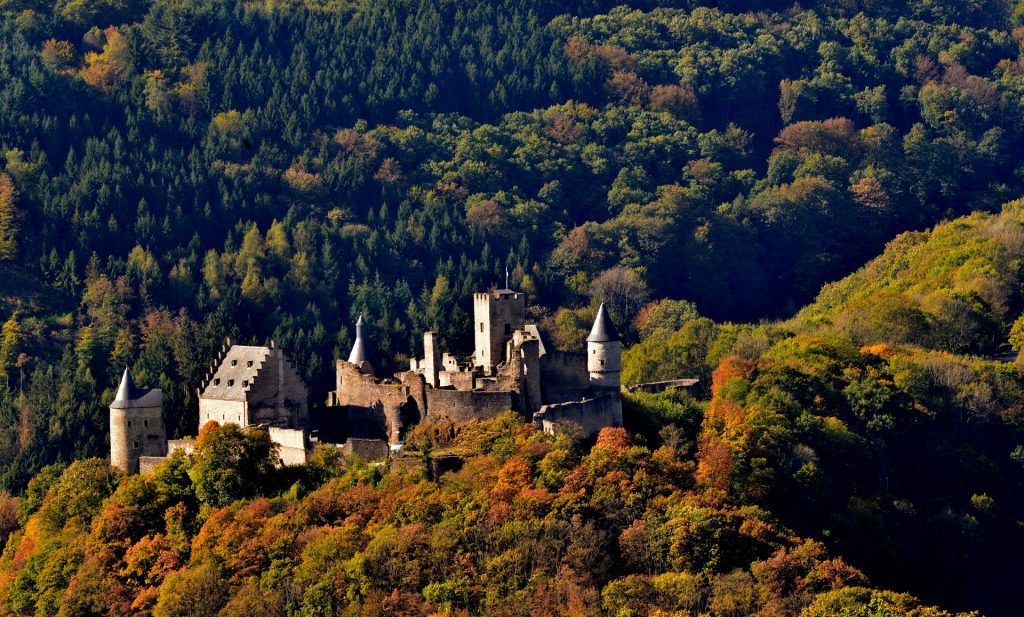
13. Mondorf-Les-Bains
Nestled in the serene southeastern corner of Luxembourg, Mondorf-Les-Bains is a haven of tranquility and rejuvenation.
As you approach, the gentle sweep of the lush Moselle vineyards captivates your senses, hinting at the natural beauty that awaits. Upon arrival, the quaint charm of this small spa town warmly welcomes you. It’s a retreat from the hustle of daily life.
The heart of Mondorf-Les-Bains is its therapeutic spa, drawing from a rich tradition dating back to the 19th century.
As you step into the Domaine Thermal, a world of relaxation unfolds before you. The healing touch of the mineral-rich waters, unique to this region, beckons. Each spa session is a promise of renewal, an invitation to restore body and soul amidst a backdrop of stunning architectural elegance.
But Mondorf-Les-Bains is not just a sanctuary for the weary; it’s a gateway to an array of outdoor adventures.
The surrounding countryside with its rolling hills and pristine lakes is a playground for the nature enthusiast. Whether it’s a leisurely bike ride along the scenic trails, a hearty hike through the verdant woods, or a relaxed stroll through the beautifully manicured parks, the embrace of nature is ever-present.
As dusk descends, the town’s quaint cafes and fine dining establishments come alive. The air fills with the aroma of delightful Luxembourgish cuisine, offering a taste of the region’s rich culinary heritage.
As you dine under a canopy of stars, the peaceful ambiance of Mondorf-Les-Bains cradles you into a state of bliss, rounding off a day of exquisite experiences in this charming corner of Luxembourg. Each moment spent here leaves a lasting imprint, beckoning a return to this oasis of calm in the heart of Europe.
14. Esch-sur-Sûre
Nestled in the heart of Luxembourg’s Ardennes region, Esch-sur-Sûre is a hidden treasure awaiting discovery. The village, with its ancient stone houses and serene lanes, exudes a timeless charm. At its core stands a majestic medieval castle, perched atop a hill, silently narrating tales of yore.
As you wander through the village, the River Sûre meanders along, adding a whimsical touch to the scenic beauty. The nearby Upper-Sûre Natural Park invites with open arms, offering a refuge to nature enthusiasts.
Here, you can embark on a tranquil canoe ride or hike through verdant trails. As the sun casts a golden glow on Esch-sur-Sûre, the village transforms into a picturesque haven, with the castle’s silhouette casting a long shadow over the tranquil waters.
Each moment spent here is a step back in time, a pause in the hustle of modern life, promising a serene yet thrilling escapade into the lap of nature and history.
Esch-Sur-Sûre Castle in Luxembourg gets its name from the town it is located in https://t.co/yAG0OJ8gsp pic.twitter.com/CMinwXbrZc
— Lady of the Castles (@KasteelVrouwtje) April 2, 2022
15. Upper Sûre Natural Park
Nestled in the north-western part of Luxembourg, the Upper Sûre Natural Park is a sanctuary of tranquility and natural splendor. As you approach the park, the pristine Upper Sûre Lake, the largest body of water in the country, greets you with its calm, mirror-like surface.
It’s an invitation to escape the hustle and bustle of daily life. Each step you take into this haven unveils a landscape rich with lush forests, rolling hills, and meandering rivers.
The exhilarating scent of fresh pine mixed with the sweet fragrance of blooming wildflowers awakens your senses. You could opt for a leisurely boat ride across the lake, each stroke of the oar creating gentle ripples on the glassy water.
Alternatively, the numerous hiking trails beckon the adventurous at heart, leading to vantage points that offer breathtaking views of the undulating countryside.
The park is not just a natural wonder but also a haven for wildlife. As you traverse the trails, you may encounter a playful squirrel scampering among the trees or a deer cautiously stepping through the underbrush.
The birdwatchers among you would be thrilled with the myriad of bird species fluttering in the canopy above.
As the day comes to a close, the sunset casts a golden glow over the park, painting the sky with shades of pink and orange.
The Upper Sûre Natural Park is not just a visit; it’s an experience that rejuvenates the soul, reminding one of the timeless beauty and serenity that nature bestows.
🚗 to Luxembourg & explore the Upper Sûre Natural Park. The lake is perfect for swimming. 📷Tristan Schmurr via Flickr pic.twitter.com/vgYhZ8h0RM
— Eurotunnel Le Shuttle (@LeShuttle) July 30, 2016
16. Walferdange
Tucked away to the north of Luxembourg City, Walferdange presents a tranquil escape from the city’s bustling pace. As you enter Walferdange, you’re welcomed by the verdant landscapes and the calm currents of the Alzette River.
The town’s ancient roots reveal themselves as you explore the remains of the Roman villa, narrating stories of the old civilizations that once thrived here.
The present in Walferdange is as enticing as its past. The local rose garden is a spectacle, its vibrant blooms painting the town in myriad hues, evolving with the passing seasons. As you wander through, the delicate aroma of roses escorts you, creating a memory that lingers long after.
Walferdange’s vineyards are a testament to the time-honored tradition of winemaking. Here, the joy of tasting local wines is an homage to the region’s rich wine heritage. And as the day nears its end, the setting sun casts a warm glow over the town, its golden light dancing on the river’s surface.
A visit to Walferdange is more than just a sojourn; it’s an immersive experience that encapsulates the essence of Luxembourg’s timeless allure. Each moment here is a gentle voyage through time, a soothing exploration that leaves a lasting impression.
Did you miss #Schueberfouer 2020? Come to #Walferdange! 😊#Luxembourg pic.twitter.com/PwHCaRbvRe
— SmejiciSeBestie (@Bestie_se_smeje) October 17, 2020
17. Walferdange Castle
Nestled amidst the lush greenery of Luxembourg’s rolling countryside, lies the enchanting Walferdange Castle. As you approach, the castle’s grandeur captures your breath, its majestic facade reflecting tales of yesteryears.
Each stone, each turret, holds whispers of the past, waiting to narrate tales of royal feasts and medieval chivalry.
Entering its gates, you are transported back in time. The meticulously maintained gardens are a burst of colors, encircling the castle with a tapestry of blooming flowers. Walking through the ornate halls, the intricacy of the architectural designs speaks volumes of the meticulous craftsmanship of a bygone era.
As the sunlight filters through the ancient stained glass windows, it casts playful shadows on the age-old stones, creating a mesmerizing play of light and dark. The serenity of the place melds with the echoes of history, providing a tranquil yet exhilarating exploration.
Walferdange Castle isn’t just a visit; it’s an immersive journey through Luxembourg’s rich heritage, a stirring encounter with the elegance and nobility of days gone by. Each corner invites a sense of wonder, each room narrates a story, making your visit an unforgettable saga of discovery in the heart of Europe.
16 most popular tourist attractions in Luxembourg
— Helena Ereditsh Dr (@ereditsh) August 24, 2019
11 Walferdange and its castle pic.twitter.com/Nrcvwc1g5k
18. Notre-Dame Cathedral
Stepping into the sacred enclave of Notre-Dame Cathedral in Luxembourg is like traversing through time.
As you approach, the Gothic spires reach skywards, piercing the horizon with a sense of divine aspiration.
Each stone of its venerable facade seems to whisper tales of bygone eras. Upon entering, a profound silence envelops you, allowing the echoes of ancient chants to fill the spiritual void.
The air is thick with devotion, each stained glass window a kaleidoscope of religious fervor. The delicate artwork and the ethereal light casting colors on the ancient pews beckon you further into its sacred heart.
Here, amidst the blend of Gothic and Renaissance architecture, the divine feels palpable, the spiritual resonance a comforting cloak in the midst of a modern city.
Each corner of this venerable edifice invites reflection, a chance to connect with something timeless.
The Notre-Dame Cathedral is not just a visit; it’s an ethereal journey into Luxembourg’s devout heart, a serene escape into a realm where the past and the present beautifully coalesce.
Love it when music does this. The Notre Dame Cathedral in Luxembourg. pic.twitter.com/7j0VtXuyv2
— Rufus Wainwright (@rufuswainwright) July 15, 2018
19. Larochette
With a picturesque setting, this charming locale is a treasure waiting to be discovered.
As you approach, the town’s medieval castle ruins catch your eye, standing proudly atop a rocky outcrop. Each stone tells tales of yore, echoing the grandeur that once graced this land.
Stepping into the town, the cobbled streets welcome you, as if taking you on a journey back in time. The gentle murmur of the White Ernz river accompanies your wanderings through Larochette’s serene lanes.
As the sunlight plays upon the gentle ripples of the river, a calm descends, making you feel at one with this age-old hamlet.
But Larochette is not just about quiet reflection. The bustling market square buzzes with a vibrant local life. The aroma of freshly brewed coffee mingles with the laughter resonating from cozy cafes. The community’s warm camaraderie is infectious, wrapping you in a comforting embrace.
And as night descends, the town transforms. The castle ruins are bathed in a soft glow, creating an ethereal silhouette against the starlit sky. The tranquil ambiance, the rich history, and the welcoming heart of Larochette make every moment spent here a cherished memory.
In Larochette, the blend of medieval charm and natural beauty offers a tranquil yet exhilarating escape from the mundane, into a world where the past and present dance in a timeless embrace.
🥾🥾The secret hiking way, near to the castle of Larochette Luxembourg..🇱🇺🇱🇺& Bayfield, Wisconsin 🇺🇸🇺🇸 pic.twitter.com/ggNPaDnu6Z
— Monica (@monica_beer1) July 18, 2020
20. Berdorfsf
I believe you might be referring to Berdorf, a small town in Luxembourg. Here’s a thrilling paragraph about visiting Berdorf:
Stepping into Berdorf, Luxembourg, is like wandering into a fairytale. Every twist and turn of its charming streets invites adventure.
Nestled amidst the Mullerthal Region, it’s a gateway to a natural wonderland often dubbed as Luxembourg’s Little Switzerland. The iconic sandstone rocks surrounding the town beckon explorers with their majestic formations.
Hiking trails wind through enchanting forests, leading to vantage points where the view stretches across endless greenery.
Each path unveils a scene more breathtaking than the last. The whimsical ambiance of Berdorf extends to its quaint cafes, where each cup of coffee comes with a view of the serene landscape.
Here, the magic of nature intertwines with the quiet charm of a small town, promising an unforgettable escape in the heart of Europe. With every visit, Berdorf reveals a new secret, waiting to be discovered by those seeking a tranquil retreat and the thrill of exploration.
21. Vianden Castle
Vianden Castle beckons the curious traveler with its majestic silhouette. As you approach, its towering spires and robust stone walls transport you back to the medieval era.
Each step towards this grand edifice is a step back in time, into a narrative brimming with royal intrigues and knightly valor. Upon entering, the castle’s vast halls and intricately designed interiors unfold a tale of a glorious past.
The breathtaking views from the castle ramparts are a visual feast, showcasing the quaint town of Vianden and the meandering Our River below. As the sunlight casts a golden glow on the ancient stones, the castle seems to whisper the legends of yore.
A visit to Vianden Castle isn’t merely a tour, but an immersive journey through the pages of Luxembourg’s rich, medieval history. Each corner holds a story, each stone echoes the legacy of the bygone era, making a visit to Vianden Castle a vivid, unforgettable chapter in your Luxembourg adventure.
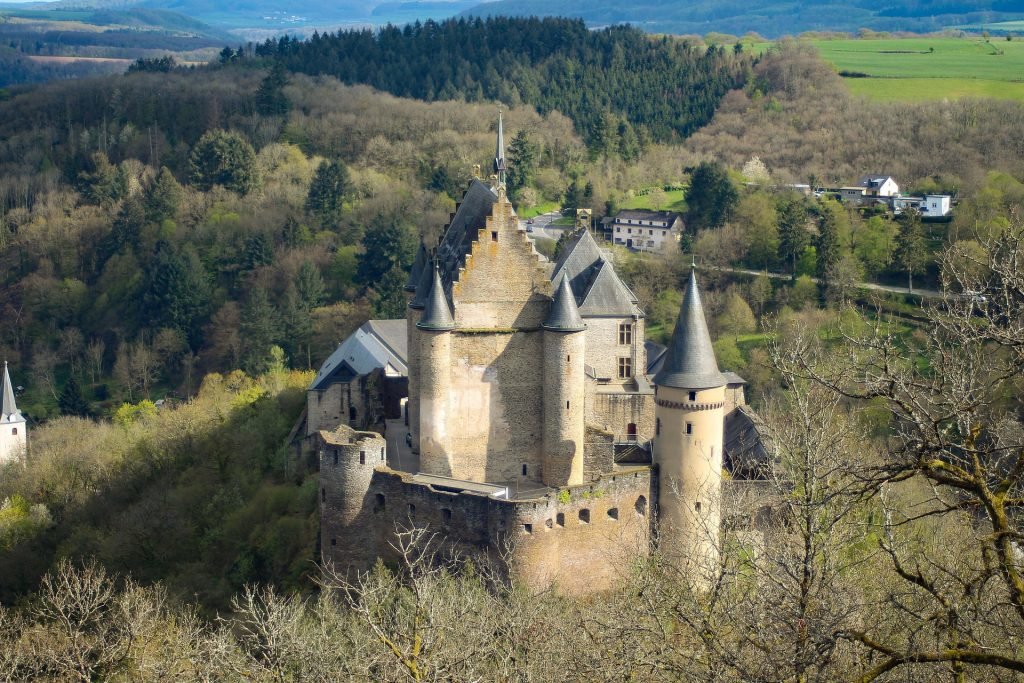
22. Parc Merveilleux
Embarking on an adventure in Parc Merveilleux is like stepping into a whimsical wonderland right in the heart of Luxembourg, Europe. As you enter, a world filled with enchanting creatures, both real and mythical, unfolds before you.
The park is alive with the cheerful cacophony of animals, ranging from the native to the exotic. Your heart races as you encounter majestic deer or observe playful monkeys swinging through the trees.
It’s not just a zoo; it’s a realm where fairy tales come to life. As you meander through themed playgrounds, each corner reveals a new spectacle.
The laughter of children resonates through the air as they scuttle between the magical play areas, their imaginations set ablaze. A miniature train whistles cheerfully, inviting young and old for a nostalgic ride around the park’s serene landscapes.
Amidst the playful ambiance, the tranquil spots by the ponds offer a peaceful respite. Here, you can pause, reveling in the serenity that juxtaposes the lively spirit of Parc Merveilleux. The beautiful flora adds hues of green, pink, and lavender, painting a picturesque scene that imprints on your memory.
As the day winds down, the soft glow of the setting sun casts a golden hue over the park. It’s a captivating scene that encapsulates the magic of Parc Merveilleux, leaving you with a treasure trove of delightful memories as you bid farewell to this charming sanctuary of joy and wonder.
Looking for some activities with kids in #Luxembourg this weekend? The “Parc Merveilleux” in #Bettembourg opens its doors this Saturday. Definitely worth visiting…#visitluxembourg #visitredrock
— Visit Luxembourg (@luxembourginfo) March 23, 2018
📷 Parc Merveilleux pic.twitter.com/riXhgkiH1P
23. Luxembourg City Center
Stepping into Luxembourg City Center is like entering a realm where history romances modernity. Every corner holds whispers of the past, narrated through ancient stone walls and timeworn cobblestone streets.
Yet, the city pulses with a youthful vigor, mirrored in its bustling cafes and contemporary art installations. As you wander through the alleys, the aroma of freshly baked pastries beckons, mingling with the echo of laughter from nearby bistros.
The gentle strum of a street musician’s guitar resonates through the crisp European air, adding a melodious note to the unfolding adventure. The City Center invites you to linger, to explore, and to discover the essence of Luxembourg.
With each step, there’s a new story to uncover, a fresh scene to admire. And as the day unfolds into a starlit night, the city transforms yet again, revealing a vibrant nightlife that pulses in the heart of Europe. The magic of Luxembourg City Center is endless, timeless, waiting to be discovered.
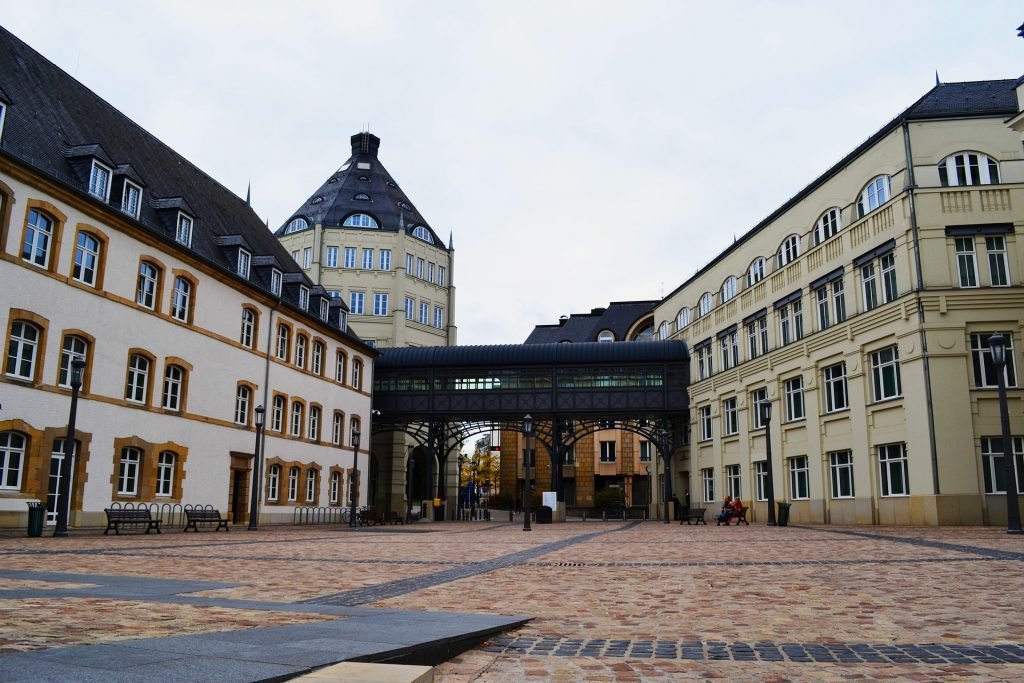
24. Mullerthal
Oh, the enchanting Mullerthal! Known as Luxembourg’s Little Switzerland, this region beckons with its verdant, rolling hills and dense, mystical forests. The moment you step into Mullerthal, you’re transported into a fairytale.
Each trail leads to awe-inspiring vistas, with the gentle streams carving through rugged, moss-covered rocks. The iconic Schiessentümpel waterfall is a sight to behold, its waters cascading gracefully amidst a picturesque backdrop.
As you wander deeper, the whisper of the wind through ancient trees tells tales of bygone eras. The rock formations here are a marvel, sculpted by nature into whimsical shapes over millennia. With every step, the Mullerthal unveils a fresh, untouched corner of beauty, waiting to steal your breath away.
Amidst the silence of the woods, the quaint villages of Mullerthal offer a warm, cozy respite. This is a place where nature and history dance in a timeless embrace, inviting you to lose yourself in the grand tapestry of Luxembourg’s captivating landscape.
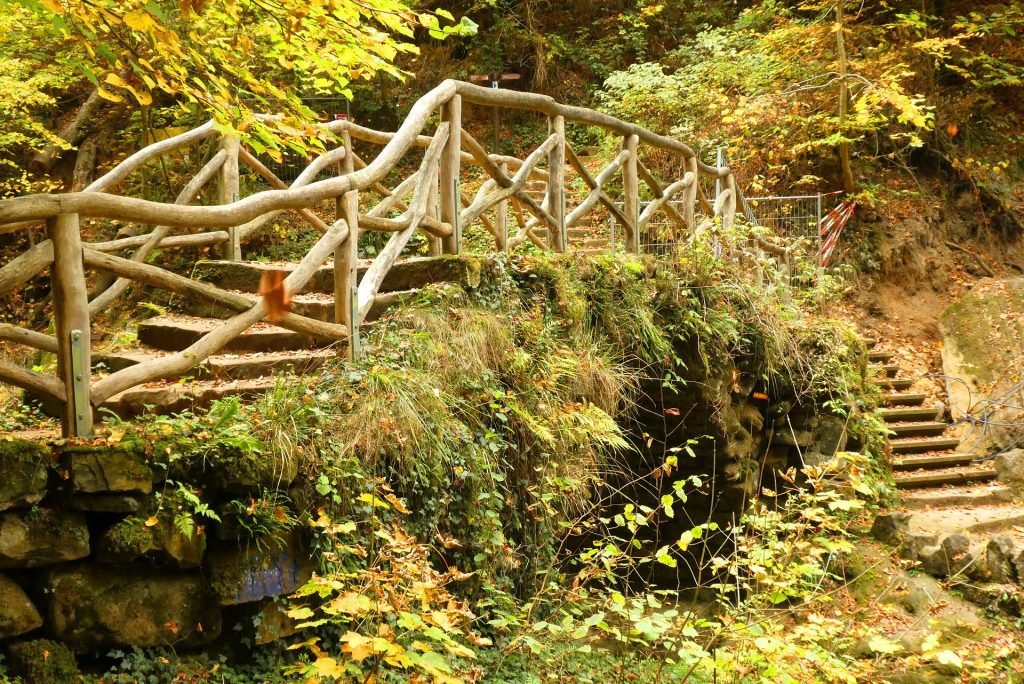
25. Shopping in Luxembourg
In the heart of Europe, Luxembourg unveils a shopping scene as diverse and charming as its cultural heritage.
As you stroll through the quaint streets of Luxembourg City, you’ll encounter an array of boutiques, each with a unique flair.
From high-end designer stores to quaint boutiques, the offerings are endless. The capital city elegantly combines traditional Luxembourger craftsmanship with modern, global brands.
Venture into the rustic corners of the city and discover antique shops where treasures from the past await. The bustling markets, especially during weekends, are a spectacle of vibrant colors and enticing aromas.
Here, local artisans display their crafts, offering a slice of Luxembourg’s rich artistic tradition. And don’t miss the chocolate shops! Luxembourger chocolate is a heavenly delight, a sweet testimony to the country’s finesse in culinary arts.
Each shopping experience in Luxembourg is more than a mere transaction; it’s a journey through the country’s rich tapestry of traditions and modern elegance.
Out of the list of the Best Things To Do in Luxembourg, you can pick and choose which ones you want to cover depending on your preferences and how much time you have available on hand. We’d recommend doing all of them!
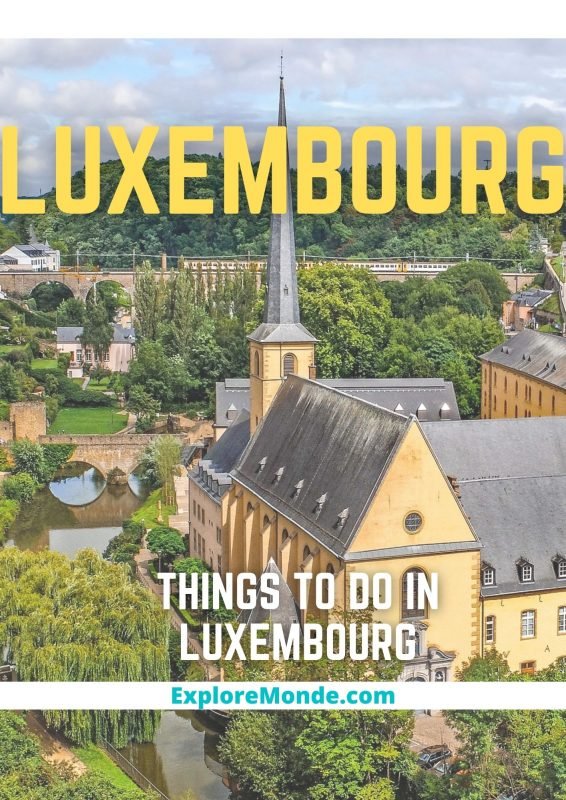
Note: The hours of operation, ticket prices, and admission criteria of museums, parks, etc. may change from time to time. For the most updated information, we recommend checking the official website of the attraction directly prior to your planned visit.
Categories: Asia | Africa | Europe | USA | Australia & New Zealand | France | Germany | India | Italy | Spain | Sports | Switzerland | Travel Tips | UK | Products | Download AI Trip Planner App
Page Contents










